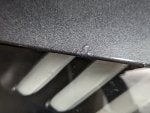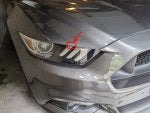I have a 2017 S550 GT with about 50,000 miles on it.
Bought it new, always garaged, and it's a southern car. (North Carolina)
Just noticed this. It also seems to be just beginning on the other side as well.
Anybody have any ideas? Thanks!
![]()
![]()
Bought it new, always garaged, and it's a southern car. (North Carolina)
Just noticed this. It also seems to be just beginning on the other side as well.
Anybody have any ideas? Thanks!







